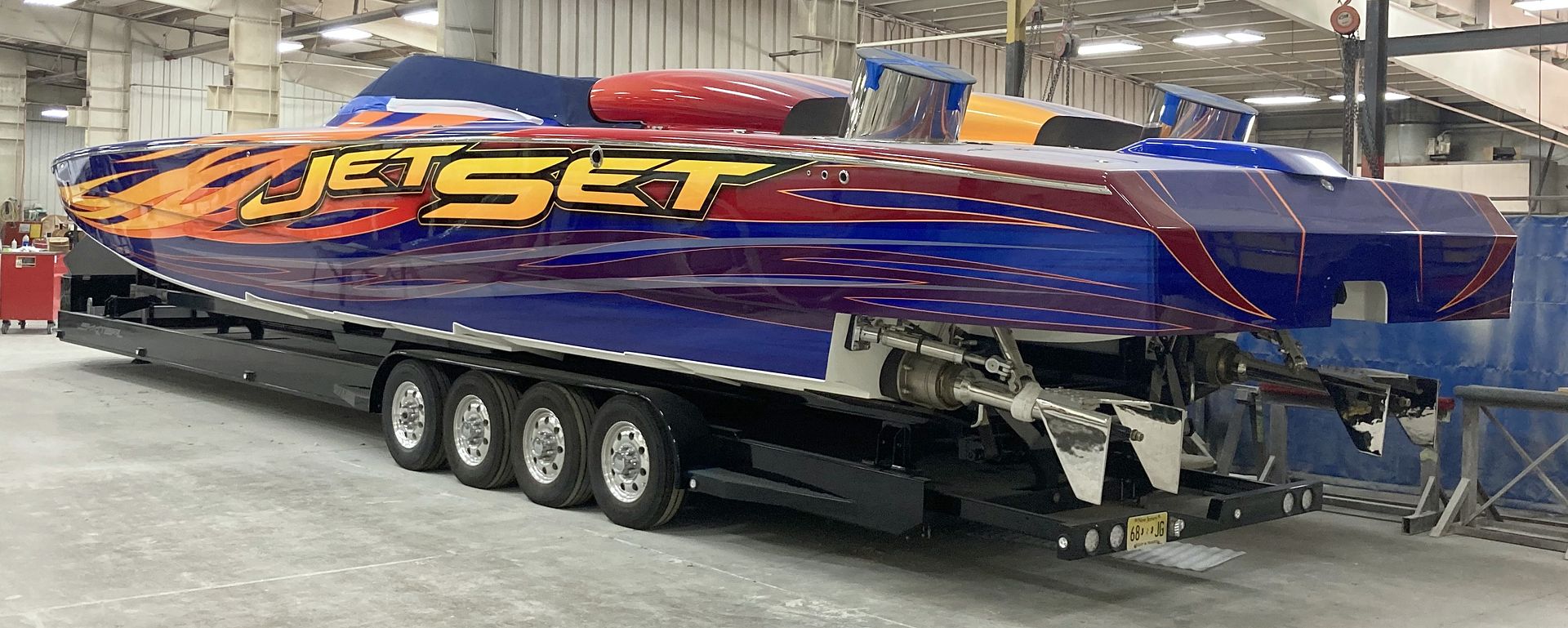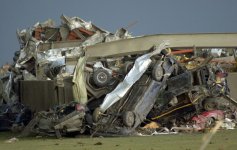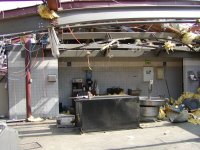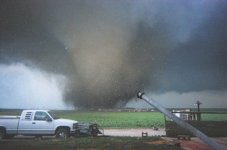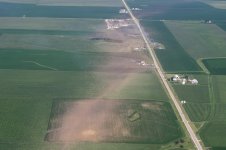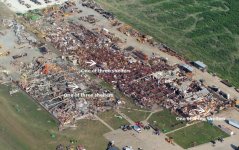BBB725
Benefactor
After seeing the damaged cause in Oklahoma I remembered a company we do business that got hit in 2004. I don't think many people heard of the Parsons Company tornado strike because no one was killed. Here's an article, a link and some pics.
The 2004 Roanoke tornado was a powerful tornado that formed outside of Roanoke, Illinois, a small town in central Illinois.
On Tuesday, July 13, 2004, at 2:26 PM, a tornado with a reported width of a quarter mile (0.4 km) struck west of the village of Roanoke, damaging much of the area and cutting power to the main town of Roanoke for three days. The tornado was later rated as an F4 on the Fujita scale. The tornado started approximately one mile north of Metamora, located eight miles (12.8 km) west of Roanoke, and lifted approximately one mile (1.6 km) south of Roanoke. This was a distance of 9.6 miles (15.4 kilometers), making it a long-lived tornado.
The worst damage was the destruction of the Parsons Company manufacturing plant, a parts supplier for Caterpillar Inc., which was completely leveled. Although over one hundred people were inside the building when the tornado struck, there were no fatalities and only minor injuries. This was attributed to preparations made during the construction of the plant and spotter training given to some of the workers. Although no tornado sirens were heard at the plant before the tornado struck, an alarm sounded by one of the spotters allowed all the workers to move to storm shelters and ride out the storm.
Damage outside the plant was also extreme. Many of the employees' cars were picked up and tossed into nearby cornfields. Three neighboring farmsteads were completely swept away, with only debris remaining in the basements. This type of damage resulted in the National Weather Service's violent category F4 classification.
Two local residents chased the tornado for much of its 23-minute duration. They produced a half-hour long video that was sold in the Peoria area to help raise funds for employees of the Parsons plant, most of whom had lost their cars and were either underinsured or not insured.
The storm was an example of how structural planning, storm-spotting, and awareness techniques can be used by companies. The plant owner's decision to include storm shelters in the building's design likely saved the lives of many employees. Just as important, the early notice provided by the company storm-spotters allowed employees to reach the shelters before the storm struck. The Parsons plant reopened in April 2005 with seven tornado shelters, five more than the original plant.
The Roanoke tornado was the most significant tornado of a small tornado outbreak which transitioned into a destructive derecho over an extensive area of the Ohio Valley. The Roanoke 2004 Tornado was featured on The Weather Channel's "Storm Stories" and "Full Force Nature".
http://www.parsonscompany.com/parsons/galleryplate.php
The 2004 Roanoke tornado was a powerful tornado that formed outside of Roanoke, Illinois, a small town in central Illinois.
On Tuesday, July 13, 2004, at 2:26 PM, a tornado with a reported width of a quarter mile (0.4 km) struck west of the village of Roanoke, damaging much of the area and cutting power to the main town of Roanoke for three days. The tornado was later rated as an F4 on the Fujita scale. The tornado started approximately one mile north of Metamora, located eight miles (12.8 km) west of Roanoke, and lifted approximately one mile (1.6 km) south of Roanoke. This was a distance of 9.6 miles (15.4 kilometers), making it a long-lived tornado.
The worst damage was the destruction of the Parsons Company manufacturing plant, a parts supplier for Caterpillar Inc., which was completely leveled. Although over one hundred people were inside the building when the tornado struck, there were no fatalities and only minor injuries. This was attributed to preparations made during the construction of the plant and spotter training given to some of the workers. Although no tornado sirens were heard at the plant before the tornado struck, an alarm sounded by one of the spotters allowed all the workers to move to storm shelters and ride out the storm.
Damage outside the plant was also extreme. Many of the employees' cars were picked up and tossed into nearby cornfields. Three neighboring farmsteads were completely swept away, with only debris remaining in the basements. This type of damage resulted in the National Weather Service's violent category F4 classification.
Two local residents chased the tornado for much of its 23-minute duration. They produced a half-hour long video that was sold in the Peoria area to help raise funds for employees of the Parsons plant, most of whom had lost their cars and were either underinsured or not insured.
The storm was an example of how structural planning, storm-spotting, and awareness techniques can be used by companies. The plant owner's decision to include storm shelters in the building's design likely saved the lives of many employees. Just as important, the early notice provided by the company storm-spotters allowed employees to reach the shelters before the storm struck. The Parsons plant reopened in April 2005 with seven tornado shelters, five more than the original plant.
The Roanoke tornado was the most significant tornado of a small tornado outbreak which transitioned into a destructive derecho over an extensive area of the Ohio Valley. The Roanoke 2004 Tornado was featured on The Weather Channel's "Storm Stories" and "Full Force Nature".
http://www.parsonscompany.com/parsons/galleryplate.php
